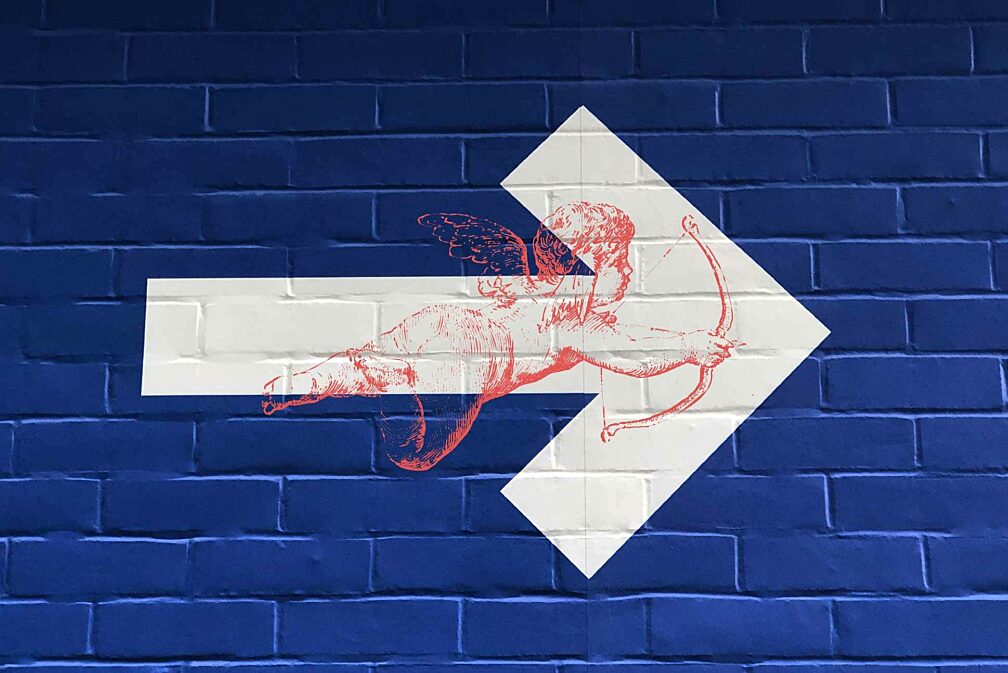Blog
Brand + Advertising

eHarmony’s Research-led Campaign Has Me Swiping Right
Dating services have some of the most historically cringey ad creative. I’m mostly thinking about dating apps, but go back (if you’re old enough) to hotlines or personals ads in the paper. They still make me shudder for a second.
So when eHarmony dropped new creative this fall, I wasn’t ready for it. Because it hit different in all the best ways.
What I was ready for was what I’d been trained to expect from the dating app category: inexplicably attractive 20-somethings talking to the camera, giving a half-hearted testimonial for why they use it as their dating app of choice. Using the app was front and center, with the only payoff being dates, not relationships.
This is where I have to give credit to Hinge, which dropped what might’ve been the first original and disruptive campaign with its “The dating app designed to be deleted” mantra. I loved the marriage of messaging and creative here, both fresh to the senses in an impactful yet lighthearted way. Hinge pivoted from an app you need to have to an app you won’t have for long, and that was a phenomenal match for how the culture’s POV has shifted after years of swiping.
RESEARCH LEADS TO CHEMISTRY
But eHarmony was able to take it further. Thanks to primary research, the dating app found that the formulaic approach to profile building made things feel less personal for users, making it more difficult to identify a genuine connection. According to AdAge, “The survey also found that 55% of people find generic dating app profiles that don’t say enough about who people really are the most annoying thing about app profiles, followed by overly filtered profile pictures (47%) and not enough detail to start a meaningful conversation (45%).”
It’s clear that the commercials were aimed at amping up the individuality of the app’s users. The insight being that a person’s unique interests, quirks, styles and cultural connections may not lead to a lot of likes, but they’re much more likely to end in love. Here’s how it might look as a Get/To/By—a framework we use to connect strategic insight to creative execution:
GET connection-starved singles who struggle to find a person they feel comfortable with beyond a first date
TO select eHarmony as the dating app that encourages people to be themselves, resulting in greater, more meaningful interactions
BY showing them that if you love yourself for who you are, someone else will, too.
The creative is then able to land on a wonderful new slogan. In this case: “Get who gets you.”
So far, four ad spots have been shared, each with a unique scene and setting that carries the same optimistic look and feel. Two of the spots feature outsiders looking in, spectators of love in the making who are then reminded of the romance they want for themselves. One of these features a nail salon and mimes, while the other is at a beach. Two more spots show two very different couples that certainly look like they’re going to make it because they so obviously get one another. One is a classic date with an adorable Titanic reference, and the other is how two people share a bathroom over time—and all the moments that come from that experience. The ads embrace unique interests and, more importantly, reflect a diverse user base to get away from dating apps’ traditional white mid-20s mold.
THE ADS VS. THE CAMPAIGN
From a marketing perspective, commercial spots are the profile pictures of a broader campaign. Sure, they attract immediate interest, but a deeper connection is made when the rest of the profile feels like a cohesive campaign. This is where eHarmony gets mixed reviews.

Naturally, I stalked eHarmony on social to see if they are who they say they are. Their Instagram account has some excellent behind-the-scenes content from various commercial shoots, and I’m a big fan. Content like this ups the authenticity factor and gets the most out of those expensive TV shoots. My only complaint is that I wish there was more of it.
The website does incorporate some creative elements from the new campaign, but they opted to not lean in too heavily. This wasn’t a rebrand so it’s not surprising that the site wasn’t completely overhauled.
In writing this article, I showed enough interest for eHarmony to send me an ad on Facebook. I was disappointed to see a classically unrealistic model in a bathing suit as the “hook” with no reference to the “Get Who Gets You” concept. For anyone the new ads resonated with, receiving something like this has the potential to turn them off again.
Overall, there’s a lot to love about what eHarmony has done with this campaign. Thoughtful primary research? Check. Willingness to listen to that research? Check. Creative interpretation of the strategy? Check. Execution? Needs some work, but its heart is in the right place.
RECOMMENDED FOR YOU
Interested in developing a new strategy or reinventing your brand? Read more on brand reinvention lessons we can learn from Taylor Swift and how to execute a pre-launch strategy for your product or service.
Paul Gangarossa
Paul Gangarossa is a marketing strategist who is focused on identifying insights that pave the way for successful campaigns. Contact him at paul_gangarossa@dixonschwabl.com.